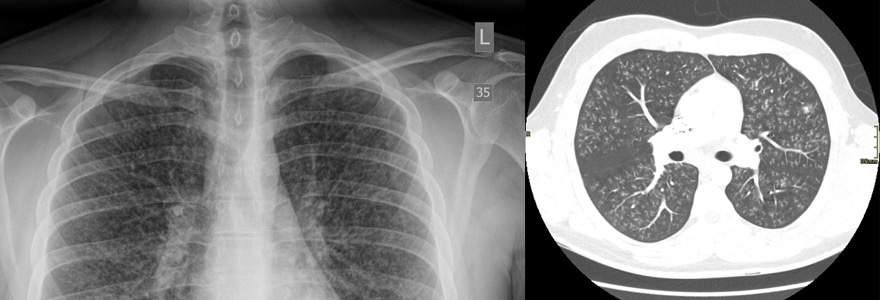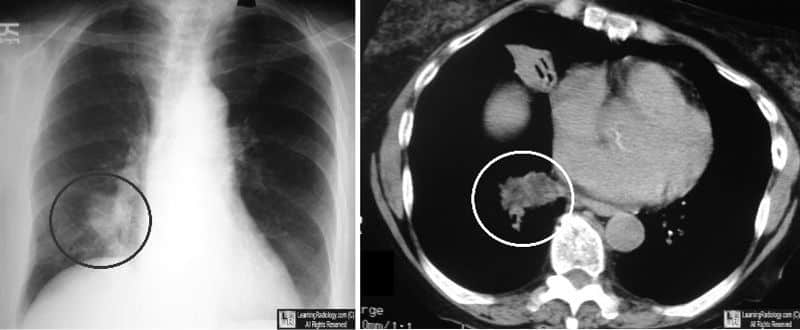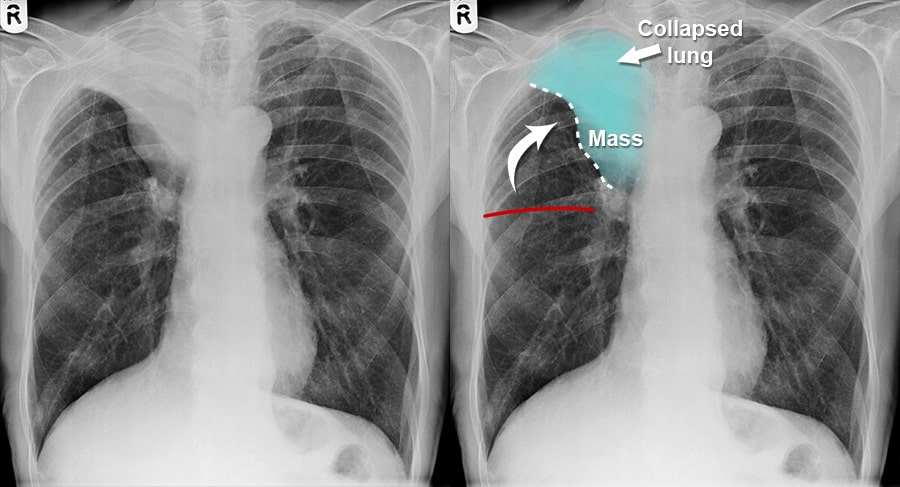How To Quit Vaping: Benefits Of Quitting And Healthy Alternatives

Medically Reviewed By: Manish Mishra, MBBS

Written by: Fikret Terzic MD, MS
E-cigarette use is considered to be healthier than smoking cigarettes. However, there are many known health risks associated with vaping, and many compounds in vape juice are unidentifiable.

Vaping is considered to be a healthier alternative to smoking cigarettes, and many people use vaping as a way to quit smoking.
Young people, however, are more likely never to have smoked cigarettes when they begin using “smokeless cigarettes,” unaware of the health risks associated with them.
Regardless of your reason for using e-cigarettes, you may be looking to quit given these health risks, which include serious damage to major organs of the body.
This guide provides details on the benefits of quitting vaping and healthy alternatives and treatments that can help you quit.
E-Cigarettes Vs. Standard Cigarettes
Traditional cigarettes contain thousands of chemicals, including many that are toxic and known carcinogens.
Although e-cigarettes (e-cigs) contain fewer chemicals, many of the chemicals are unidentifiable, which is concerning, and others are known to be cancer-causing or lead to other health issues.
E-cigs are also often just as addictive as cigarettes because they typically contain nicotine, a substance that is as addictive as heroin and cocaine.
Top Benefits Of Quitting Vaping
Vaping has been shown to cause damage to major organs of the body, including the brain, lungs, and heart.
When vape cartridges are modified, there are additional health risks to consider. Quitting vaping is the best way to protect yourself from these risks.
1. Improved Lung Health
One of the most critical and immediate benefits of quitting vaping is improved lung function and a reduced risk for lung damage.
In addition to the health conditions below, vaping can also damage the lungs or cause lung disease through the formaldehyde and acrolein found in e-liquid or produced when the liquid is heated.
“Popcorn Lung” And Vaping
Using vapes can cause damage to the small airways of the lungs resulting in a condition called bronchiolitis obliterans (BO).

Anyone who avoids microwave popcorn may be familiar with this condition, which received attention after workers in microwave popcorn factories started getting sick.
An ingredient used to mimic butter flavoring, diacetyl, was found to be the cause, and BO was nicknamed “popcorn lung.”
People who vape are at risk of developing this condition because diacetyl is a common flavor enhancer in vape juice.
Popcorn lung can involve permanent scarring of the smallest airways in the lungs, leading to difficulty breathing. There is currently no lasting treatment for the condition.
Lipoid Pneumonia And E-Cigarettes
Another cause of inflammation in the lungs and lung damage through the use of e-cigarettes is the oily substances, or fatty acids, found in e-liquid.
Like bacteria and viruses that cause the type of pneumonia that most people are familiar with, these lipids can be drawn into the lungs and cause inflammation leading to pneumonia.
Symptoms of lipoid pneumonia include:
- chest pain
- trouble breathing
- persistent cough
- shortness of breath
- coughing up blood

Like popcorn lung, there is no good treatment for lipoid pneumonia. However, quitting vaping is the best thing you can do to help your lungs heal on their own.
Vape-Induced Collapsed Lung
In recent years, Johns Hopkins Medical Center has begun treating a large number of young patients who vape and have experienced a collapsed lung.
A collapsed lung happens when there is a hole in the lungs. This can occur through blunt trauma, such as a stabbing, or when blisters on the top of the lungs burst.

Tall people who experience rapid growth spurts in their youth are more at risk of developing these blisters, which are harmless unless they rupture.
Smoking cigarettes or e-cigarettes makes it more likely that the blisters will pop. Although rest can help a collapsed lung heal, more serious cases require surgery.
2. Mental Health Benefits
Although some people feel relief from symptoms like anxiety when they vape, the effect could be a result of nicotine addiction.
Once an addiction to nicotine develops, withdrawal symptoms such as anxiety are alleviated when the person vapes or smokes again.
In addition to the psychological withdrawal symptoms associated with nicotine addiction, research shows that vaping may contribute to mental health issues in other ways.
In a Canadian study conducted in 2020, people who vaped experienced several adverse mental health effects.
In the study, vaping was shown to be related to an increase in:
- depressive symptoms
- suicidal thoughts and attempts
- perceived negative mental health
- diagnosed mood and anxiety disorders
A big benefit of quitting for people with certain substance use disorders is that it could help them prevent a relapse. Studies show that nicotine use is associated with cravings for opioids and stimulants.
Vaping is still a relatively new activity, and more research is needed in the area of its effects on mental health.
3. Heart Health Improvements
Not only is the nicotine found in vapes and cigarettes addictive, but it’s also toxic. As such, its use increases your blood pressure and heart rate, which can lead to a heart attack.
Many people who vape also smoke cigarettes — a combination that a recent study shows increases the risk of cardiovascular disease, including stroke, myocardial infarction, and coronary heart disease.
The study, involving almost half a million people, showed that those who smoke cigarettes and use vapes were significantly more likely even than smokers who never vaped to develop cardiovascular disease.
However, vaping alone is also bad for your heart. Research shows that people who vape are 30% more likely to have a stroke than nonsmokers and 56% more likely to have a heart attack.
4. Better Control Over Physical Health
In addition to the respiratory, mental, and cardiovascular health benefits you receive when you quit vaping, another benefit to consider is knowing that you have better control of your overall health.
This is due in large part to the unknown components found in both traditional vapes as well as those that have been modified.
Unknown Ingredients In Standard Vapes
Just as the dangers associated with the compounds in cigarettes were unknown for many years, we still have a lot to learn about the compounds in standard vapes.
A chemical analysis of Juul, Blu, Vuse, and Mi-Salt brands of vapes in 2021 revealed almost 2,000 chemicals, most of which couldn’t be identified.
Three industrial chemicals, a pesticide, and flavorings associated with toxic effects were found. Caffeine was present in two of the four products but not listed as an ingredient.
Vapes Laced With Drugs
Vape cartridges may be modified to include substances not usually found in vape juice, or they may be produced specifically to contain these substances.
There have been reports of fentanyl-laced vapes, including from the U.S. Drug Enforcement Administration (DEA) in 2020 warning the public about the danger following an overdose death linked to vaping.
While the primary concern related to fentanyl abuse is overdose involving the powdered form of the drug, the DEA has noted that ingesting fentanyl via vaping does pose a serious threat.
Confiscated vapes at high schools have also been found to contain THC, the chemical responsible for most of marijuana’s psychological effects, heroin, and other drugs, according to news reports.
Young people who smoke hydrocodone, smoke heroin, or smoke other opioids using vapes are at risk of experiencing brain and lung damage as well as other health risks, including addiction.
“Weed pens,” or vaporizers used to inhale THC, are becoming a popular way to ingest marijuana.
THC oil cartridges may contain vitamin E acetate, which studies show can interfere with lung function and lead to serious damage to the lungs when inhaled.
5. Reduced Or Eliminated Cravings
Many U.S. cities have banned vaping in the workplace, including restaurants and bars. There are other places and times when vaping isn’t possible.
People who smoke or vape are very likely familiar with the uncomfortable, sometimes anxiety-inducing feeling of not being able to take a puff.
This could be due to nicotine withdrawal, which involves symptoms such as:
- mood swings
- feelings of restlessness
- difficulty concentrating
- sleep problems
- cravings or urges to smoke or vape
It’s unknown if vapes contain other addictive substances, as many of the compounds found in vape juice aren’t identifiable. Caffeine is one known ingredient that may cause withdrawal symptoms.
How To Quit E-Cigarettes: Healthy Alternatives To Vaping
According to the Centers for Disease Control and Prevention, most people who smoke want to quit.
It isn’t clear if this includes people who vape, but given the growing health concerns and uncertainties associated with vaping, many people may be looking to give up e-cigarettes, too.
Vaping has become the preferred method of tobacco ingestion for young people, who may have added incentives to quit because their bodies and brains are still developing.
The 2022 National Youth Tobacco Survey revealed that 16.5% of high school students had used tobacco in the past 30 days, with one in four of those students using it daily.
E-cigarettes (9.4%) were the most popular type of device used, followed by cigars (1.9%) and cigarettes (1.6%).
People who want to quit vaping to protect their health or for other reasons have many alternative activities and treatments to help them.
Behavioral Therapy
At the root of all the alternatives mentioned here is a change in behavior: from vaping to not vaping. This is why therapies that focus on changing behavior can be so helpful.
Cognitive behavioral therapy (CBT) helps people change a particular behavior by addressing the thoughts that accompany it.
This can be helpful for people with psychological disorders, too, because behaviors play a role in the development of these disorders.
Getting to the root of the behavior through the faulty or unhelpful thoughts and beliefs that accompany it can lead to lasting behavioral changes, which is key for quitting vaping.
Nicotine Replacement Therapy
Research into the efficacy of nicotine replacement therapy (NRT) for quitting vaping is limited, but there is some evidence that it can help and may be worth a try.
NRT tends to work best when paired with CBT or other therapies aimed at behavior modification.
NRT comes in the following forms:
- gum
- patch
- lozenges
- nasal spray
- inhaler
Nicotine withdrawal symptoms might cause someone to keep using cigarettes or e-cigarettes, and NRT can help relieve those symptoms so that you can focus on the psychological aspects of quitting.
Exercise
There is evidence that exercise can reduce the urge to smoke, especially short bursts of aerobic activity.
Exercise can also be a good replacement for vaping because it involves deep breathing and a change of scenery.
The exertion associated with aerobic exercise can also help strengthen both the heart and the lungs.
Apps For Managing Cravings
Some people have success using apps to help them quit vaping. These apps can help you track your use, identify triggers, and set and achieve vaping-reduction goals.
Puff Count is one popular app with a focus on vaping. Quit Genius focuses on the ideas used in CBT to help you quit.
Resources For Quitting Vaping
Having access to more information about vaping and tools to stop using e-cigarettes can help people looking to quit reach their goal.
Here are some resources for getting started:
- American Lung Association, E-Cigarettes and Vaping: information on the health risks associated with vaping plus resources for quitting
- Centers for Disease Control and Prevention (CDC), Electronic Cigarettes: multimedia resources, including factsheets and videos, in English and Spanish related to vaping
- Cleveland Clinic, How to Quit Vaping: an article with research-backed info on vaping and advice on how to quit
- Healthline, Is Vaping Bad for You? And 12 Other FAQs: answers to some of the most searched questions online about vaping
- National Institute on Drug Abuse, Tobacco/Nicotine and Vaping: research, reports, news releases, and other resources on vaping
- Truth Initiative, This is Quitting: a free app service to help young people and adults quit vaping, plus other resources from the largest nonprofit in the U.S. dedicated to ending tobacco use and nicotine addiction
- U.S. Department of Health and Human Services, Know the Risks: E-cigarettes and Young People: a wide variety of resources based on the Surgeon General’s “E-Cigarette Use Among Youth and Young Adults” report (also available in Spanish)
- U.S. Food and Drug Administration (FDA), Quitting Smoking: tips from former smokers who have quit, plus many other resources for quitting smoking and vaping
- FDA, Vaping Prevention Resources: cross-culture vaping prevention resources for parents, teachers, and students
- Yale University, Yale-Led Study Teaches Teens How to Quit Vaping: information on vaping as it pertains to teens, plus the opportunity to participate in a paid survey
- American College of Cardiology — E-Cigarettes Linked to Heart Attacks, Coronary Artery Disease and Depression https://www.acc.org/about-acc/press-releases/2019/03/07/10/03/ecigarettes-linked-to-heart-attacks-coronary-artery-disease-and-depression
- Centers for Disease Control and Prevention (CDC) — Outbreak of Lung Injury Associated with the Use of E-Cigarette, or Vaping, Products https://www.cdc.gov/tobacco/basic_information/e-cigarettes/severe-lung-disease.html#key-facts-vit-e
- Chemical Research in Toxicology — Characterizing the Chemical Landscape in Commercial E-Cigarette Liquids and Aerosols by Liquid Chromatography – High-Resolution Mass Spectrometry https://pubs.acs.org/doi/10.1021/acs.chemrestox.1c00253
- Johns Hopkins Medicine — What Does Vaping Do to Your Lungs? https://www.hopkinsmedicine.org/health/wellness-and-prevention/what-does-vaping-do-to-your-lungs
- Journal of Affective Disorders — Electronic cigarette use and mental health: A Canadian population-based study https://pubmed.ncbi.nlm.nih.gov/31542558/
- U.S. Drug Enforcement Administration (DEA) — Fentanyl Used in Vape Pens https://www.dea.gov/sites/default/files/2020-09/Fentanyl%20Used%20in%20Vape%20Pens__PRB%20FINAL.pdf

